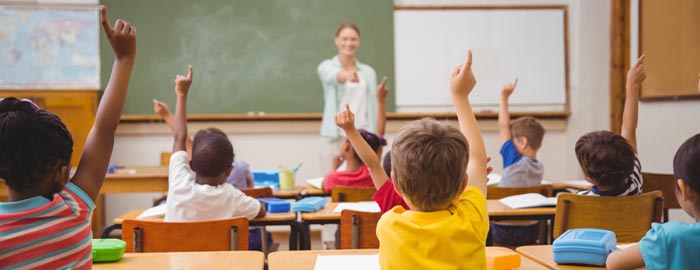|
A good education for
your child starts with good schools,
good teachers and good vision. Your
child's eyes are constantly in use in
the classroom and at play. When his or
her vision is not functioning properly,
learning and participation in
recreational activities will also
suffer. |
 |
|
The basic vision skills
needed for school use are: |
| • Near
Vision. The ability to
see clearly and comfortably
at 10-13 inches. |
| • Distance
Vision. The ability to
see clearly and comfortably
beyond arm's reach. |
| •
Binocular coordination.
The ability to use both eyes
together. |
| • Eye
movement skills. The
ability to aim the eyes
accurately, move smoothly
and shift them quickly and
accurately. |
| • Focusing
skills. The ability to
keep both eyes accurately
focused at the proper
distance and to change focus
quickly. |
| •
Peripheral awareness.
The ability to be aware of
things located to the side
while looking straight
ahead. |
| Eye/hand
coordination. The
ability to use the eyes and
hands together. |
|
|
If any of these or
other vision skills are lacking or do
not function properly, your child will
have to work harder. This can lead to
headaches, fatigue and other eyestrain
problems. As a parent, be alert for
symptoms that may indicate your child
has a vision or visual processing
problem. |
|
Symptoms to watch for that
may indicate your child has
a vision or visual
processing problem! |
|
It is important to let us
know if you notice your
child frequently: |
| • Loses their
place while reading |
| • Avoids
close work |
| • Holds
reading material closer than
normal |
| • Tends to
rub their eyes |
| • Has
headaches |
| • Turns or
tilts head to use one eye
only |
| • Makes
frequent reversals when
reading or writing |
| • Uses finger
to maintain place when
reading |
| • Omits or
confuses small words when
reading |
|
•
Consistently performs below
potential |
|
|
Since vision changes can occur without
you or your child noticing them, your
child should visit the eye doctor at
least once a year. If needed, the doctor
can prescribe treatment including
eyeglasses, contact lenses or vision
therapy. |